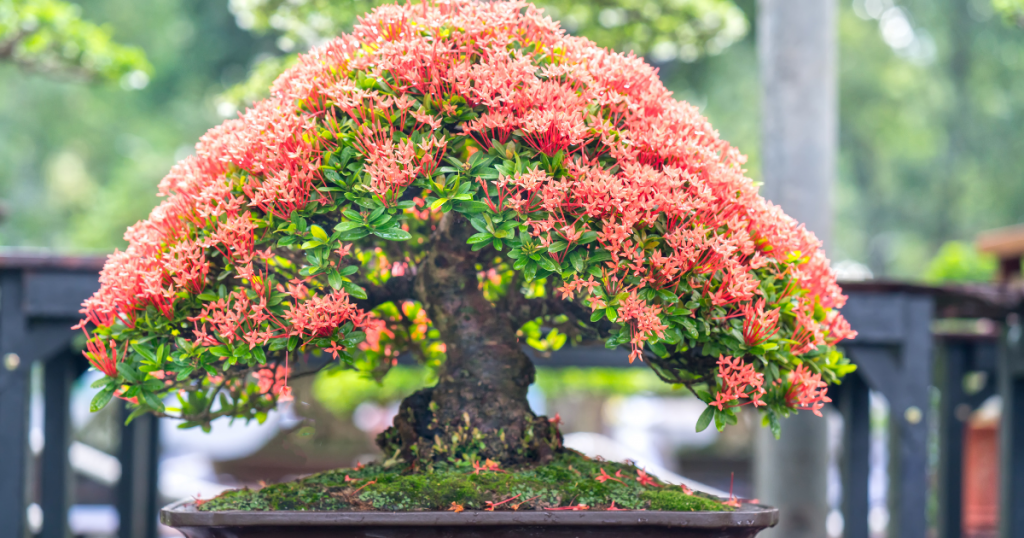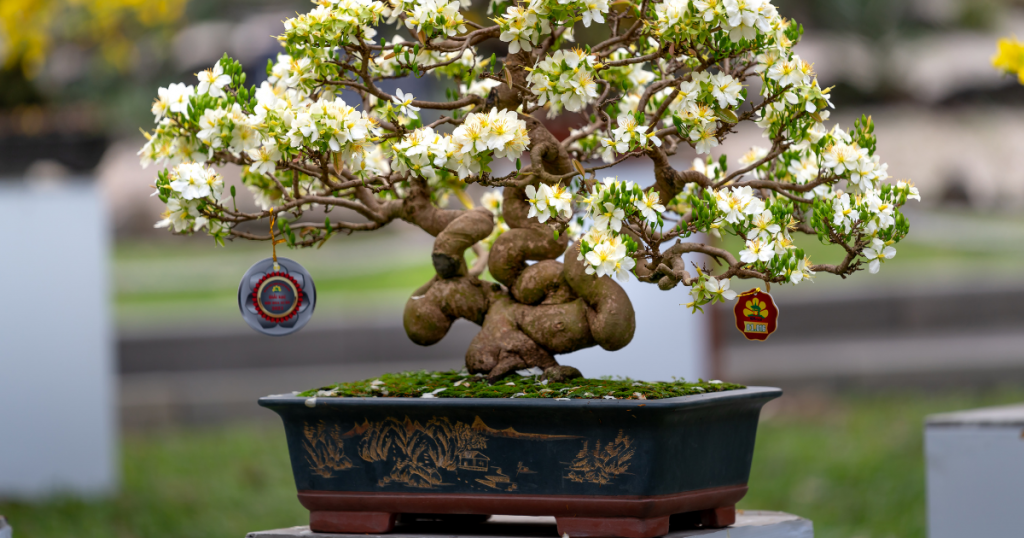
Bonsai trees are a unique and beautiful way to bring a touch of nature into your home or garden. People all over the world grow miniature versions of full-sized trees in small pots or containers, train and prune them to maintain their small size. Bonsai trees, which have a rich history dating back to ancient China and Japan, where they symbolized harmony and balance, are now enjoyed in homes, offices, and public spaces.
If you’re interested in starting your bonsai tree, you’re in luck! Growing a bonsai tree can be a fun and rewarding hobby, and with a little bit of knowledge and care, you can successfully grow a beautiful bonsai tree of your own. In this article, we’ll go over the steps you need to take to start growing a bonsai tree, including choosing the right tree species, finding the right container, and providing proper care. Whether you’re a seasoned plant enthusiast or a beginner looking to try your hand at something new, bonsai trees are a great choice. With patience and dedication, your bonsai tree will thrive and bring a sense of tranquility and beauty to your space for years to come.
When it comes to growing a bonsai tree, choosing the right tree species is an important first step. While it may be tempting to start with a tree species that you’re already familiar with, not all trees are well-suited for bonsai growth. Some tree species, like junipers and pines, are more naturally suited to bonsai growth due to their small leaves, ability to withstand pruning and adaptability to growing in small pots or containers. Other tree species, like maples and elms, can also be used but may require more care and attention.
When choosing a tree species for your bonsai, it’s important to consider the climate in which you live. Some tree species are better suited to certain climates and may not thrive in your area. For example, if you live in a hot, dry climate, you may want to choose a drought-tolerant tree species, such as juniper or pine. If you live in a humid climate, you may want to choose a tree species that are more tolerant of moisture, such as a ficus or a Chinese elm.
Another factor to consider when choosing a tree species is your level of experience with bonsai. If you’re just starting, it may be a good idea to choose a tree species that is easy to care for and more forgiving of mistakes. Junipers and pines are often recommended for beginners due to their hardiness and ability to withstand pruning. As you gain more experience and confidence, you can gradually move on to more challenging tree species.
There are many tree species to choose from when it comes to bonsai, and the best one for you will depend on your climate, level of experience, and personal preferences. Some popular tree species for bonsai include junipers, pines, ficus, Chinese elms, and maples. It’s a good idea to do some research and consider your options before making a decision. You can also talk to other bonsai enthusiasts or visit a local bonsai nursery for more information and guidance.
When it comes to growing a bonsai tree, choosing the right tree species is an important first step. By considering your climate, level of experience, and personal preferences, you can select a tree species that will thrive and bring beauty to your space for years to come.

Once you’ve chosen the tree species for your bonsai, the next step is to find the right container. The container you choose will play a crucial role in the health and growth of your bonsai tree, so it’s important to choose one that is suitable for your tree’s needs.
When it comes to bonsai containers, it’s important to find one that is shallow and wide, with adequate drainage holes to prevent the roots from becoming waterlogged. Bonsai containers should be made of a material that allows for good air circulation, such as ceramic or plastic. Avoid containers made of metal, as these can conduct heat and may be harmful to your tree’s roots.
In addition to the material and size of the container, it’s also important to consider the style and color of the container. The container you choose should complement the size and shape of your bonsai tree and fit in with the overall design of your space. There are many different styles and colors of bonsai containers to choose from, so take the time to find one that you like and that will work well with your tree.
When selecting a container for your bonsai tree, it’s also a good idea to consider the type of soil you’ll be using. Bonsai trees require well-draining soil to prevent root rot, so it’s important to choose a container that has good drainage. You can also consider using a bonsai soil mix, which is specifically formulated for bonsai trees and contains ingredients that help with drainage and moisture retention.
In addition to the container, it’s also a good idea to have some basic bonsai tools on hand, such as pruning shears, a rake, and a watering can. These tools will help you care for your bonsai tree and keep it healthy and well-maintained.
In conclusion, finding the right container for your bonsai tree is an important step in the growing process. By choosing a container that is shallow, wide, and well-draining, and that complements the size and shape of your tree, you can provide your bonsai with the proper environment it needs to thrive. With the right container and some basic bonsai tools, you’ll be well-equipped to care for your bonsai tree and watch it grow.
Once you’ve chosen the right tree species and container for your bonsai, the next step is to learn how to care for your bonsai tree. Proper care is essential for keeping your bonsai healthy and maintaining its small size and shape.
One of the most important aspects of bonsai care is watering. Bonsai trees have small root systems and are sensitive to overwatering, so it’s important to water your tree only when the soil feels dry to the touch. Avoid letting the soil dry out completely, as this can cause the tree to become stressed and may even kill it. Instead, aim to keep the soil evenly moist by watering your tree regularly, but not too frequently.
In addition to watering, bonsai trees also require regular pruning and shaping to maintain their small size and desired shape. This is typically done using bonsai pruning shears, which are specially designed for the delicate branches of a bonsai tree. Pruning your tree regularly will help to maintain its shape and encourage new growth, and can also help to remove any damaged or diseased branches.
Fertilizing your bonsai tree is another important aspect of care. Bonsai trees have small root systems and may not be able to access all the nutrients they need from the soil alone. By using a balanced fertilizer, you can help to provide your tree with the nutrients it needs to thrive. It’s a good idea to fertilize your bonsai tree every few weeks during the growing season, using a fertilizer that is specifically formulated for bonsai or other small plants.
In addition to these basic care steps, it’s also a good idea to protect your bonsai tree from extreme temperatures, pests, and diseases. This may include moving your tree to a sheltered location during extreme weather events, using pest control products as needed, and keeping an eye out for signs of disease.
Overall, caring for a bonsai tree requires patience and dedication, but the rewards are well worth it. By watering, pruning, fertilizing, and protecting your tree, you can help it to thrive and bring a touch of tranquility and beauty to your space for years to come.
In conclusion, growing a bonsai tree can be a rewarding and enjoyable hobby that brings a touch of nature into your home or garden. Whether you’re a seasoned plant enthusiast or a beginner looking to try something new, bonsai trees are a great choice. By following the steps outlined in this article, you can get started growing your bonsai tree and bring a sense of tranquility and beauty to your space.
To start growing a bonsai tree, you’ll need to choose the right tree species, find the right container, and provide proper care. Choosing the right tree species is important, as some trees are better suited to bonsai growth due to their small leaves, ability to withstand pruning and adaptability to growing in small pots or containers. You’ll also need to find a container that is shallow, wide, and well-draining, and that complements the size and shape of your tree.
Proper care is essential for keeping your bonsai tree healthy and maintaining its small size and shape. This includes watering your tree regularly, but not too frequently, pruning it regularly to maintain its shape and encourage new growth, and fertilizing it every few weeks during the growing season. It’s also important to protect your bonsai tree from extreme temperatures, pests, and diseases.
By following these steps and dedicating some time and attention to your bonsai tree, you can successfully grow a beautiful and thriving plant that will bring joy to your space for years to come. With patience and dedication, your bonsai tree will be a source of relaxation and beauty that you can enjoy for many years to come.